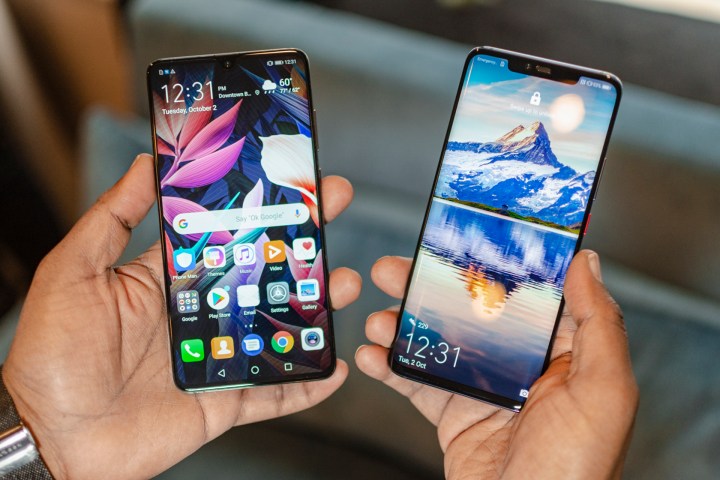We’ve seen the reports: Millennials are lacking in loyalty toward apps. When you look at the average person’s app habits, it is easy to see why. There are around 3 million apps available in the Google Play store — including a swath of top-tier games — and not every app is going to be perfect for you. Your device’s memory is limited, so it’s time to purge the apps you never use. How do you cleanse your device of unplayed games and apps, though? Have no fear! We heard your terrible plight, and we put together this simple guide on how to uninstall apps in Android.
Before we begin, if you do not intend to reinstall the app you are removing, take the time to hit the Clear Data option for any app you are uninstalling. You can usually find this button in the Storage section near the Uninstall button in each of our guides. This ensures that as little data from the app as possible will be left on your device after you uninstall it. If you are just removing an app temporarily — for instance, to make space for an operating system update — feel free to leave the data there so it will still be available when you put the app back onto your device later.
All apps aren't created equal
Finally, some apps are not able to be removed. This is usually the case with apps crucial to your device’s daily running, or — in more insidious cases — apps that have been added by your carrier or phone manufacturer. Thankfully, even though you cannot remove these apps without rooting your phone, you can usually disable them, and we added small notes to each of our guides to highlight how you can do this.
Be warned — be sure you know what you are disabling. While it is difficult to brick a phone by disabling apps, it never hurts to be sure you are turning off something you really don’t need. If you need a more in-depth guide to purging your phone of these apps, then check out our guide on removing bloatware.
How to uninstall apps in stock Android
Stock Android is the base level of Android, as created by Google. Though this level of Android is found primarily on Google’s Pixel and Nexus devices, you will find that many phone manufacturers put a light modification on top of stock on their devices (usually referred to as “skins”). Since stock Android is the underlying skeleton of most Android phones out there, you usually only need to look further than this entry if your phone has a more heavily modified Android skin, like Samsung’s Experience (most recently re-dubbed One UI).
Uninstalling apps from stock Android is simple:
Step 1: Select the Settings app from your app drawer or home screen.
Step 2: Tap Apps and Notifications, then hit App Info.
Step 3: Scroll down the list until you find the app you want to remove and tap it.
Step 4: Select Uninstall.
How to uninstall apps in Samsung Experience and One UI
Samsung’s modified Android skin has evolved a lot over the years. Previously known as TouchWiz, it was maligned as one of the worst Android skins in the world — to the point where Google almost stepped in to make it better. One UI is Samsung’s latest OS, and it, along with the older Samsung Experience, is much smoother and sleeker.
Surprisingly enough, removing apps on One UI or Samsung Experience is actually simpler than on stock Android. Even though you can still go to the Settings app, access the app list, and so on, Samsung has offered users an even faster shortcut to remove or disable undesired apps.
Step 1: Find the app you wish to uninstall.
Step 2: Long-press (tap and hold your finger) on the app, and wait for a pop-up menu to appear.
Step 3: Tap Uninstall.
Step 4: If you want to uninstall multiple apps on an S8 or newer, then you can tap Select from the same pop-up menu, select each app you want rid of, then tap Uninstall at the top left. This option isn’t available on older Samsung phones like the S7 Edge.

How to uninstall apps in Huawei’s EMUI
Huawei’s EMUI is a different Android version that is heavily altered from the stock Android formula, working more like iOS than Android in many regards. Nevertheless, you can follow the same instructions when uninstalling EMUI as you would when removing any other application from an Android device.
Step 1: Find the app you want to uninstall on your home page or in your app drawer.
Step 2: Long-press (tap and hold your finger) on the app until your phone vibrates and a pop-up menu appears.
Step 3: Tap Uninstall.
Troubleshooting
If you come across an app in stock Android that cannot be removed, then simply follow the same instructions as above, just substituting Disable for Uninstall in the final step. That should ensure that the offending app — while not removed totally — cannot be activated or impact your day-to-day activity.
Note that several apps in the Samsung Experience and One UI will not let you uninstall them, so instead, you should search for the option to disable them. It’s a quick and easy process; just click Disable instead of Uninstall after following the steps we presented above.
With Huawei, you might not have the ability to uninstall specific apps that are necessary for your phone’s operating system. You can’t uninstall others because of particular contracts with Huawei. However, you can usually disable those apps if you tap Disable instead of Uninstall when the menu we mentioned earlier pops up on your screen.









